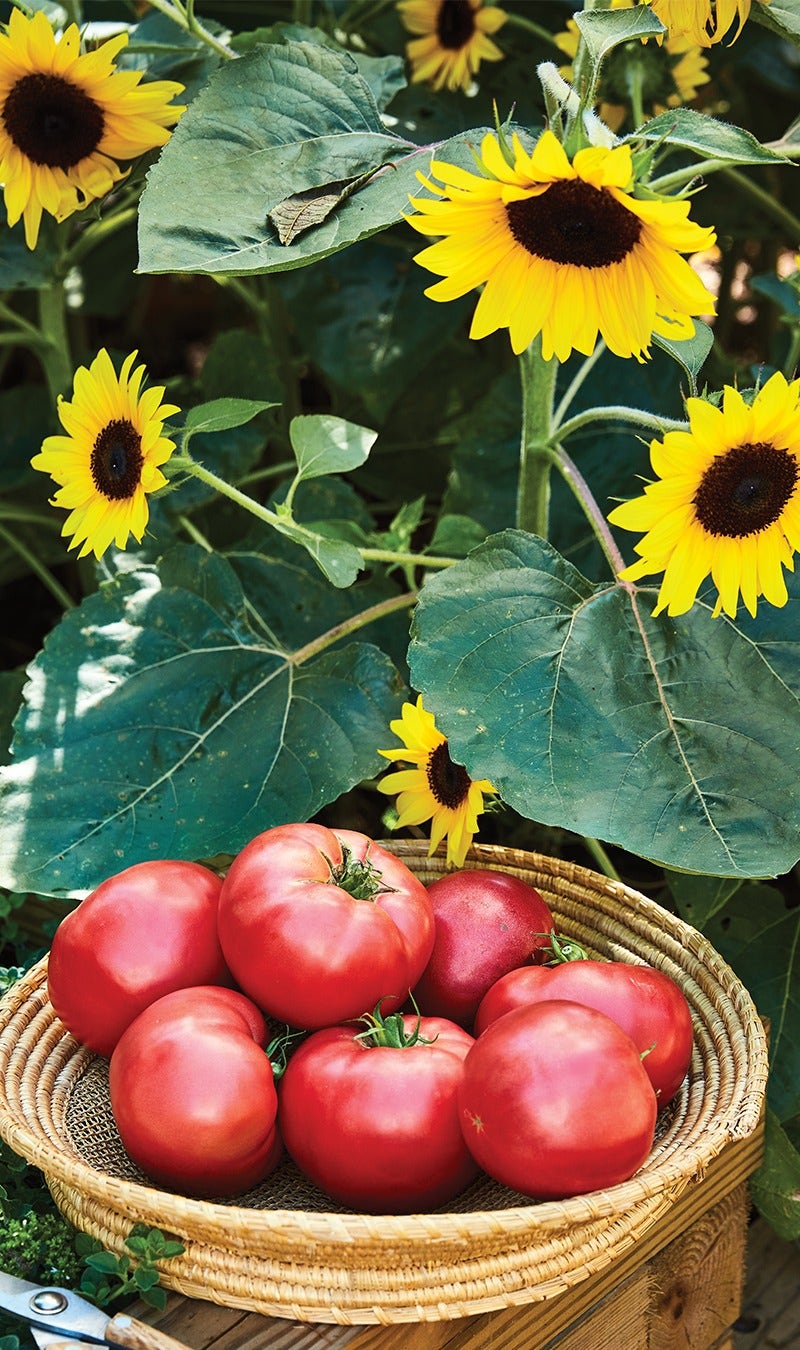


We all love perennials for the height, structure and staying power they bring to the landscape. But if you've ever tried to create a colorful, lush display that lasts all growing season using perennials alone, you know something is missing. Or perhaps you've always wanted a vegetable garden, but your homeowners association or backyard setup says otherwise. The solution? Figuring out how to grow vegetables and flowers together. Learn more about how adding annuals in with your perennials can fill in gaps and help you produce color — and even food — in your landscaping beds.
Combining Annuals and Perennials in the Garden
First, let's clarify the difference between perennials and annuals. Perennials establish strong roots and come back year after year. Some perennials are woody ornamentals (think trees and shrubs) while others are herbaceous plants that die back to the ground every year and come back in the spring. On the other hand, annuals, like many common flowers and edible plants grown in the United States, complete their life cycle in a single growing season.
When it comes to weaving vegetables and flowers into a perennial garden, think of it this way: Perennials are like the sofa in your living room — an anchor that stays in one place and dictates how you utilize the space. Vegetables and annual flowers are like the throw pillows, wall art, blankets, ottomans and other additions that make a space both visually appealing and functional. Just a few of these elements can transform an area, and you can easily swap them out when they're past their prime (or something more eye-catching comes along). Essentially, by interspersing annual flowers and vegetables into your tried-and-true perennials, you can create a complete, cohesive landscape.
Benefits of Weaving Vegetables and Flowers Together
Perhaps you have a healthy row of perennials that shines in the spring but quickly fades into a wall of dark green. Or maybe you just planted starter shrubs that will eventually form a hedge, but right now, the tiny plants feel light-years apart.
If your perennial-filled landscape feels dull, annual flowers may be just the plants it's missing. They not only add instant color and variety but can keep shining well past perennials' beautiful but often brief burst of blooms (looking at you, lilacs). Annual flowers can help define or enhance your desired color palette, whether you want to complement or contrast what you already have. The bottom line: Annuals can help fill your landscape with strong, consistent color.
When you intersperse vegetables and other edible plants in your landscape in a practice often referred to as foodscaping, you can enjoy the satisfaction of growing even just a small portion of your food yourself — all without ripping up sod or losing a portion of your precious backyard play space. It's also an ideal way to step into vegetable gardening without a significant commitment, and you'll discover that edible plants offer plenty of texture and beauty, whether it's giant green kale leaves or ferny asparagus fronds.
Aesthetic and personal benefits aside, when you grow more types of plants, you increase your landscape's biodiversity. This brings in pollinators and beneficial insects, which help boost flower and fruit production.
How to Add Flowers and Veggies Into Your Garden
First, ensure you have at least a semipermanent framework of perennials in place to serve as the backbone for your annuals. Without it, you'll struggle to identify where to tuck in fun additions and find yourself covering an entire garden bed with plants that only last a season.
Once you have your perennials in place, it's time to start sprinkling in edible plants and annual flowers. We get it — the thought of shaking up your landscape can feel intimidating. But luckily, with a systematic approach, you can easily figure out what plants to shop for and the ideal places to put them.
Scout Your Spot
First, designate the areas where you can fit flowers and vegetables based on the overall shape of your landscape. Some locations to consider include:
The front of the bed, especially for smaller annuals
As a middle layer, especially if you have tall perennials in the back and shorter perennials in the front
As a gap-filler between newer, smaller perennials
Up a trellis, especially for vining produce
Note Plants' Needs
Once you've scouted your spots, note nearby plants' care requirements, including the amount of sunlight, water and fertilizer they need. Then, research flowers and veggies with a similar profile. For example, pair perennials and annuals that need full sun, little water and minimal fertilizer next to each other. Not only will each plant have its best chance of success in its optimal environment, but it'll also make it easier for you to water and tend to the different areas of your beds.
Use the Buddy System
To take your planning a level further, pair plants that can benefit each other in the landscape while separating those that can harm each other in a practice known as companion planting. Take beans, for example: Planting marigolds nearby can help deter pesky bean beetles, while garlic, onions and shallots can stunt beans' growth.
Time It Right
Next, it's time to think about the growing season and bloom time to help you determine when to plant. Ensure your early season picks are well suited to the cooler weather and hold off on warm-weather plants until temperatures rise. For example, plant veggies like onions, lettuce, cabbage and kale and flowers like pansies, violas and ornamental kale in early spring, then again in late summer or fall. Wait to plant warm-season edible plants such as tomatoes and peppers and flowers like marigolds and petunias until after the threat of frost has passed.
Pay Attention to Size
Also, consider your additional vegetables and flowers' mature sizes. Make sure you leave plenty of room for additions to grow without interfering with your existing plants (or each other).
Change It Up
Finally, don't be afraid to swap throughout the growing season. While some annual plants will shine from spring to fall, many perform best within a certain temperature range and peter out above or below it. When that happens, think of it as an excuse to buy more goodies for your garden!
Easy Ways to Add Edible Plants
Now, let's put it all into practice. According to Brie Arthur, author of "The Foodscape Revolution," here are a few practical ways to incorporate vegetables, herbs and even grains into your landscape:
Use melons, cucumbers, pumpkins or other vining plants as groundcovers.
Plant tall, wispy barley or other grains instead of or with ornamental grasses.
Plant tomatoes, cucumbers and squash near sturdy shrubs to serve as support.
Plant colorful basil, Swiss chard or mustard greens alongside coleus and other leafy annuals for a cohesive look.
Add garlic along bed edges for easy planting and harvest.
Fun Ways to Add Flowers
When it comes to adding flowers to your landscape, think of yourself as a decorator. Consider the following approaches:
Create a monochromatic palette: For example, bluish-purple violas make a pretty springtime pairing when planted beside 'Blue Grape' Muscari (aka grape hyacinths).
Opt for bold contrast: Picture hot-pink impatiens contrasting chartreuse hostas or red poppies, well, popping against blue salvias.
Tie other areas of the landscape together: If one color has a commanding presence in one area of your landscape, sprinkle it in throughout other areas to create a theme.
Make a moonlight garden: Choose white or light-colored blooms and silvery foliage that's more visible at night.
Call attention to your house: Opt for flowers that match your door, shutters or siding.
It's easy to see that while perennials are an essential part of the landscape, annual vegetables and flowers can take a garden from everyday to extraordinary. Now you know how to grow vegetables and flowers together to make the most of your space and some fun ideas on how to combine them.
Need more design advice? Check out Burpee's quick guide to flower gardens.



